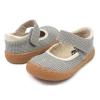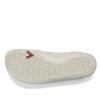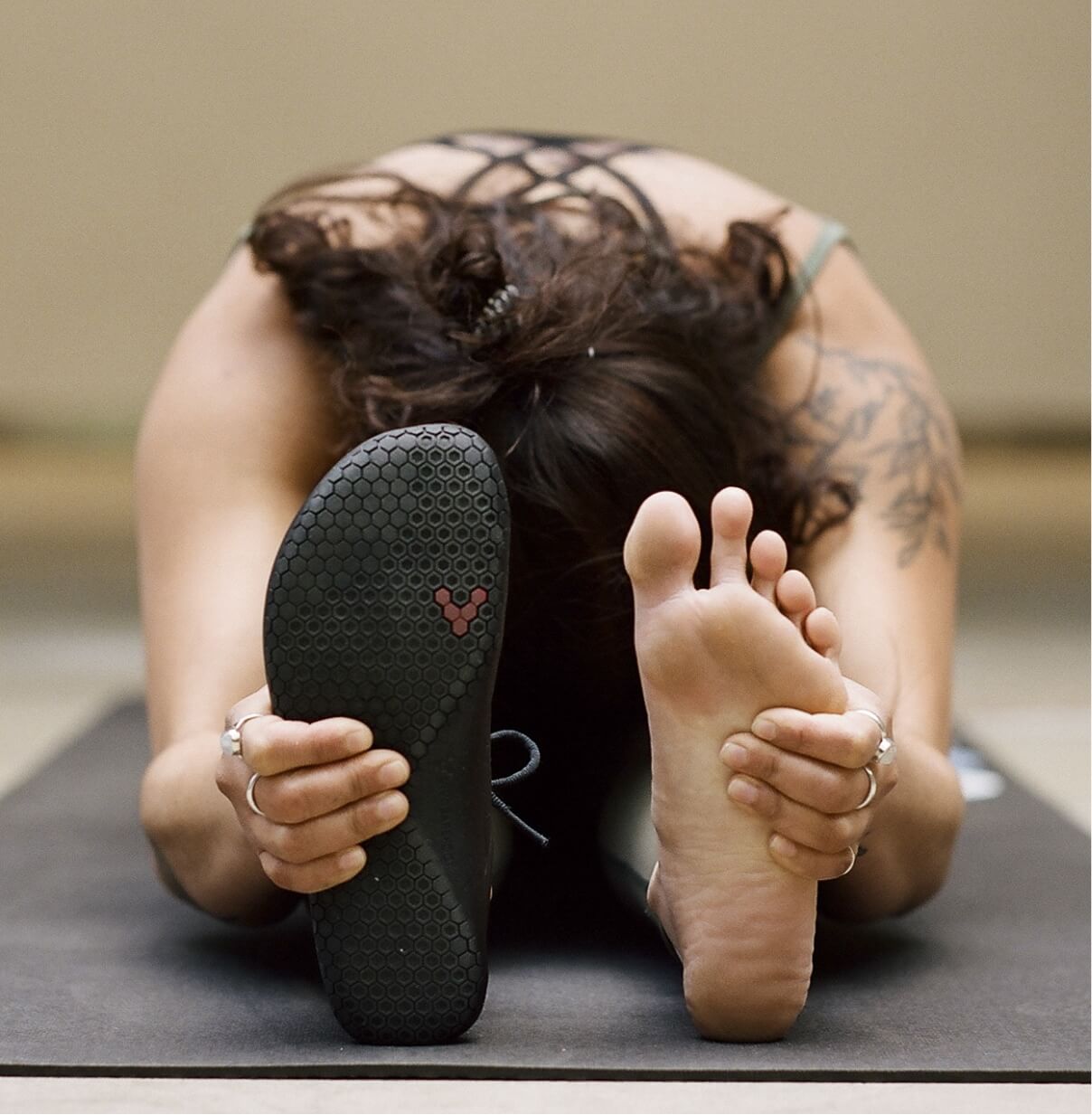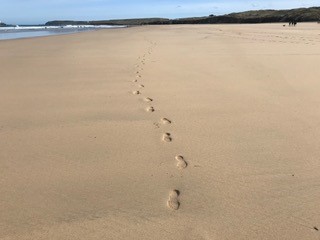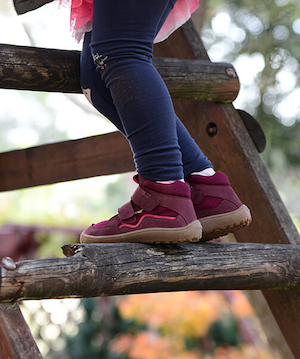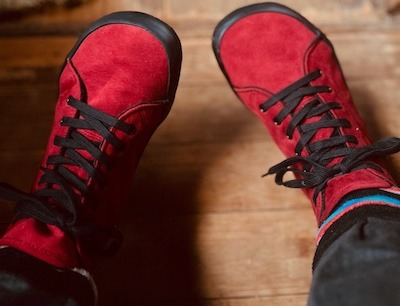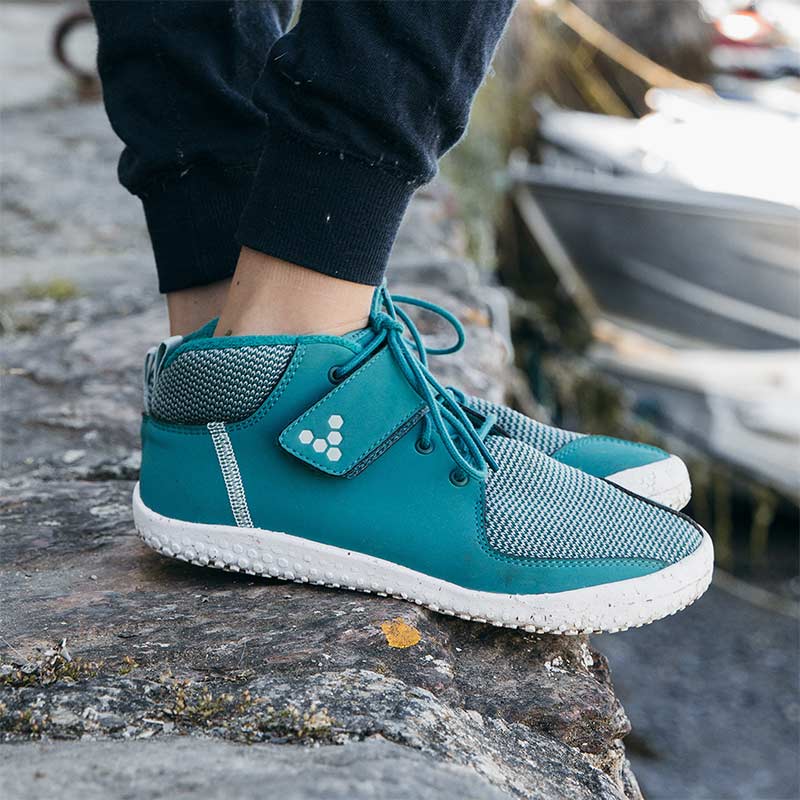
A completely flat sole with no riser or heel
To avoid changing the centre of gravity and affecting balance. A heel pushes the body forward meaning the body leans backwards to compensate putting unnecessary pressure on the lower back and spine.
No arch support
The arch is a muscle and needs to work to develop and strengthen like any other muscle. Supporting it will stop this development and prevent the arches building strength. When working properly the arch acts as the bodies spring board and shock absorber and needs to be able to strong and able to flex to do this effectively.
A wide toe box
When the foot hits the ground toes naturally spread to help balance, using the big toe to stablise the foot. The shoe should therefore be wide enough to allow for this and not constrict the toes in any way. A narrower toe box can also mold the feet and cause long term problems including bunions.
A flexible sole
This is to ensure a natural walking gait and reduce tripping. Look for a sole that is flexible all over and doesn’t just do the classic bend in the middle of a traditional shoe. The problem with the traditional single point bend is it only works properly when the foot is in the right position in the shoe, hopeless with growing children whose foot sits at different points as it grows!
A thin sole
This stimulates the many nerve endings in the foot, and allows a connection with the ground that helps balance. The technical term for this is proprioception.
Lightweight
A heavy shoe will also affect the natural centre of gravity and therefore affect balance. Not to mention make walking much harder work for a small person.
Well attached upper
The upper of the shoe should be secure on the foot to prevent the foot moving about in the shoe. This movement will cause the toes to subconsciously grip to hold onto the sole which in turn puts strain into the body.
 Free UK Returns
Free UK Returns


